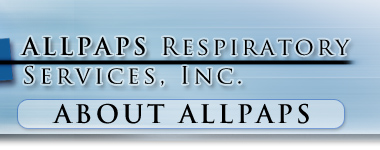Why is home oxygen prescribed?
Your doctor may prescribe oxygen if your lungs are not getting enough oxygen to your blood (a condition called hypoxemia). Breathing prescribed oxygen increases the amount of oxygen in the blood, usually reduces shortness of breath and other symptoms, and helps increase survival. Prescribed oxygen may also help protect your heart.
The air you breathe every day contains 21% oxygen. The oxygen you will receive at home is close to 100% pure oxygen. Because it is a pure concentration of oxygen, home oxygen is considered to be a drug and must be prescribed by your doctor. Oxygen is not addictive and causes no side effects when used as prescribed. Your doctor will prescribe a specific amount of oxygen that is right for you. Some people may need to use supplemental oxygen 24 hours a day, while others may only need oxygen during exercise or sleep.
Home oxygen can help promote your independence and make it easier and safer for you to complete daily living activities.
What are the methods used to deliver home oxygen?
Three types of systems are available to provide home oxygen, including compressed oxygen (tanks), liquid oxygen and oxygen concentrators. With all of these systems, oxygen is inhaled through a mask or more commonly, a lightweight tube called a nasal cannula.
A health care provider will discuss your options with you and may recommend one system based on your overall condition and your personal needs. You can also meet with home care representatives from a variety of medical supply companies to evaluate which product lines might best fit your needs. Your doctor can give you a list of companies that supply home oxygen equipment and supplies.
Will my insurance cover home oxygen therapy expenses?
Not all insurance carriers are alike and covered expenses vary among carriers. In most cases, however, oxygen therapy is covered when your physician provides the results of certain laboratory tests which prove that supplemental oxygen is needed for your well-being. These tests measure the amount of oxygen carried by the blood and were used to help your physician make the diagnosis.
Home oxygen is a benefit that may be partially or completely covered by most insurance plans, including Medicare, when prescribed according to specific guidelines. When these guidelines are not met, oxygen use may not be covered and can be expensive.
What is a compressed oxygen system?
Compressed oxygen comes in a tank that stores oxygen as a gas. A flow meter and a regulator are attached to the tank to adjust the oxygen flow. The tanks vary in size, from very large stationary tanks to tanks that are small enough to carry around.
The compressed oxygen system is generally prescribed when oxygen is not needed all the time, such as only when walking or performing physical activity.
Advantages
- Small, lightweight, portable tanks can be used for trips outside the home.
- Several tanks can be used to increase the time away from home.
- Can deliver oxygen at a high flow rate.
- Contents of tank do not evaporate.
- No electricity needed.
- A lightweight cart with wheels to pull the tank can be provided for mobility at home.
Disadvantages
- Since the oxygen is stored under pressure, the tank can be hazardous if dropped.
- Small portable oxygen tanks are limited in how long they will last. Ask your oxygen supplier how long your oxygen will last, depending on your prescribed flow rate and type of tank.
What is a liquid oxygen system?
At very cold temperatures, oxygen changes from a gas to a liquid. When liquid oxygen is warmed, it becomes a gas so it can be delivered to you.
A liquid oxygen system includes a large stationary unit that stays in the home. It also includes a small, portable canister (weighing from 5 to 13 pounds) that can be filled from the stationary unit for trips outside the home. It can be hung over the shoulder (as shown, left) or pulled on a roller cart. How long it lasts depends on the size of the portable tank and the flow rate.
Even when not in use, evaporation will empty the portable canister over time. Always check your portable canister before use.
Advantages
- Allows the user to be mobile, promoting an active lifestyle. (User can fill own portable tank).
- Can deliver oxygen at a high flow rate.
- Requires no electricity.
- Doesn't make much noise; relatively silent.
- More oxygen can be stored in a liquid form than a gaseous form.
Disadvantages
- Large tank needs to be refilled regularly by a service technician. Depending on the flow rate and the size of the tank, a liquid oxygen system may need to be refilled from once or twice a week to once a month.
- Oxygen user must be home for scheduled tank fill-ups. User must also return home to refill portable tank.
- Contents of tanks evaporate, making it necessary to have the tank refilled often.
A cylinder of oxygen is provided as a backup for the electric system in case there is a system or power failure. In addition, a small, lightweight portable tank is provided for trips outside the home (since the concentrator system is not portable). This portable tank can be hung over your shoulder or pulled on a roller cart.
An oxygen concentrator may be recommended if you need oxygen all the time or while sleeping.
What is an oxygen concentrator system?
The oxygen concentrator is an electric oxygen delivery system about the size of a large suitcase. The concentrator extracts some of the air from the room and separates the oxygen from other gases in the air. Oxygen is then delivered to you through a nasal cannula. When in use, the concentrator should be placed in an open area - never place it in a closet or other closed space.
Advantages
- Minimal maintenance needed.
- Does not need to be refilled.
- Provides an unlimited oxygen supply (as long as it is plugged in and turned on).
- Can be moved easily from room to room.
Disadvantages
- Requires electricity and will increase your electric bill, especially if used 24 hours a day.
- Is affected by power surges and outages, requiring backup oxygen system.
- Cannot deliver oxygen at high flow rates. (It has volume limitations and can only deliver oxygen up to about 5 liters).
- Motor produces noise and heat.
What are oxygen conserving systems?
Oxygen conserving devices are becoming increasingly popular. Since these devices conserve oxygen, smaller portable systems (tanks or liquid vessels) can provide hours of oxygen while you are away from home. Unfortunately, not everyone can tolerate these devices, so it is important to ask your doctor before using a conserving device.
The most popular conserving devices are demand inspiratory flow systems. These devices use a sensor to detect when inspiration begins and delivers oxygen only during inspiration, thus conserving oxygen during exhalation. The demand systems can be used with either compressed or liquid oxygen.
Other oxygen conserving devices include the demand nasal cannula and the reservoir nasal cannula.
What are the basic services I should expect from my oxygen supplier?
Basic services for home oxygen users include:
- Home delivery and set-up of equipment
- Supply of necessary portable oxygen and additional refills. With a liquid oxygen system, the technician should fill the portable tank for you during the initial set-up. The technician should also demonstrate the proper filling technique for you. It will be your responsibility to fill the portable tank after the initial set-up.
- Instruction in the use of equipment
- 24-hour emergency services
- Documentation to support the medical need as prescribed by physicians
- Billing to various insurance carriers
How much does home oxygen therapy cost?
Using oxygen can be costly both for the oxygen supply itself and for the electricity needed to run the supply system. Please ask your home care supplier to discuss the expected costs with you before you choose a system.
Is home oxygen therapy safe?
Yes. Oxygen is a safe gas as long as it is used properly. Contrary to what most people believe, oxygen will not explode. Oxygen does, however, support combustion. Therefore, any material that is already burning will burn much faster and hotter in an oxygen-enriched atmosphere. It is very important to follow these precautions so that you and your family are safe when you are using your oxygen.
Oxygen use precautions
- Stay at least six feet away from any open flame or heat source (candles, gas stove, etc.) when you are using your oxygen system. If you must cook while using oxygen, make sure your tubing will not touch the gas flame or electric burner (tuck the tubing in your shirt or position it behind you).
- Do not store your oxygen system near any heat sources or open flames.
- Do not smoke nor allow others to smoke in the same room as your oxygen system. Cigarette smoking is very dangerous: sparks from a lighted cigarette could cause facial burns.
- Post "No Smoking" signs in the room where your oxygen is kept.
- Do not change the oxygen flow rate on your own -- this can lead to serious side-effects. If you feel you are not getting enough oxygen, contact your physician and notify your home care supplier.
- Never use more than 50 feet of oxygen tubing. This can dilute the concentration of oxygen that you are receiving.
- Do not expose your oxygen equipment to electrical appliances (such as electric razors, hair dryers, electric blankets, etc.)
- Check that all electrical equipment in the area near the oxygen is properly grounded.
- Be sure to have a functioning smoke detector and fire extinguisher in your home at all times.
- Keep the oxygen system away from aerosol cans or sprays, including air fresheners or hair spray. These products are very flammable.
- Keep the oxygen system clean and dust-free. The person who delivers your oxygen will show you how to do this.
- Do not use cleaning products or other products containing grease or oils, petroleum jelly, alcohol or flammable liquids on or near your oxygen system. These substances cause oxygen to be flammable.
- Keep the oxygen system in a place where it won't get knocked over.
- Always store your oxygen equipment in a well-ventilated area.
- An oxygen cylinder must be secured at all times; put it in a cart or lay it down flat.
- Do not carry liquid oxygen in a backpack or other enclosed space. Carrying cases, shoulder or hand bags, shoulder straps and backpack oxygen units are available which provide proper ventilation for the unit to ensure safety.
- Never use extension cords with any medical equipment.
- Secure loose cords and extra tubing so you don't trip on them when using your oxygen system.
- Secure floor mats and throw rugs so that you will not trip or fall when using your oxygen system.
- Be sure doorways, hallways and rooms can accommodate you if you have a portable oxygen system.
- Notify your electric company if you are using an oxygen concentrator system so they can make your house a priority during a power outage.
- Oxygen is a drug and must be used as your doctor ordered it. Too much or too little can be harmful.
- Take precautions to avoid skin contact when filling your portable liquid oxygen tank, as frost buildup could cause injury.
- Always have backup tanks available, and know how to use them.
|
 |
Myths and truths about oxygen
- Myth: Oxygen is addicting.
- Truth: Oxygen is NOT addicting.
- Myth: If I have a stuffy nose, I shouldn't bother using my nasal cannula.
- Truth: Oxygen can still be delivered even if you have a stuffy nose.
- Myth: Once you start using oxygen, you'll need it for the rest of your life.
- Truth: Many people have discontinued oxygen use, after other appropriate treatments have taken effect. This can take time, though.
- Myth: People who need oxygen must be confined to their homes and can not do anything, including travel.
- Truth: People who use oxygen can lead a normal life. There are several types of portable oxygen systems available that allow people to be more active and mobile. Oxygen can improve exercise capacity. People who use oxygen can travel with advanced planning.
- Myth: If a little oxygen is good, more oxygen is better.
- Truth: Oxygen is a drug. Use it as prescribed or instructed. Like any drug, too much or too little can be harmful.
- Myth: Shortness of breath means a lack of oxygen, so if you become short of breath you should use oxygen.
- Truth: Shortness of breath is not always associated with a lack of oxygen. If low oxygen is not the cause, taking oxygen will not help. (Your doctor can test to see if you need oxygen by taking an arterial blood sample).
|



